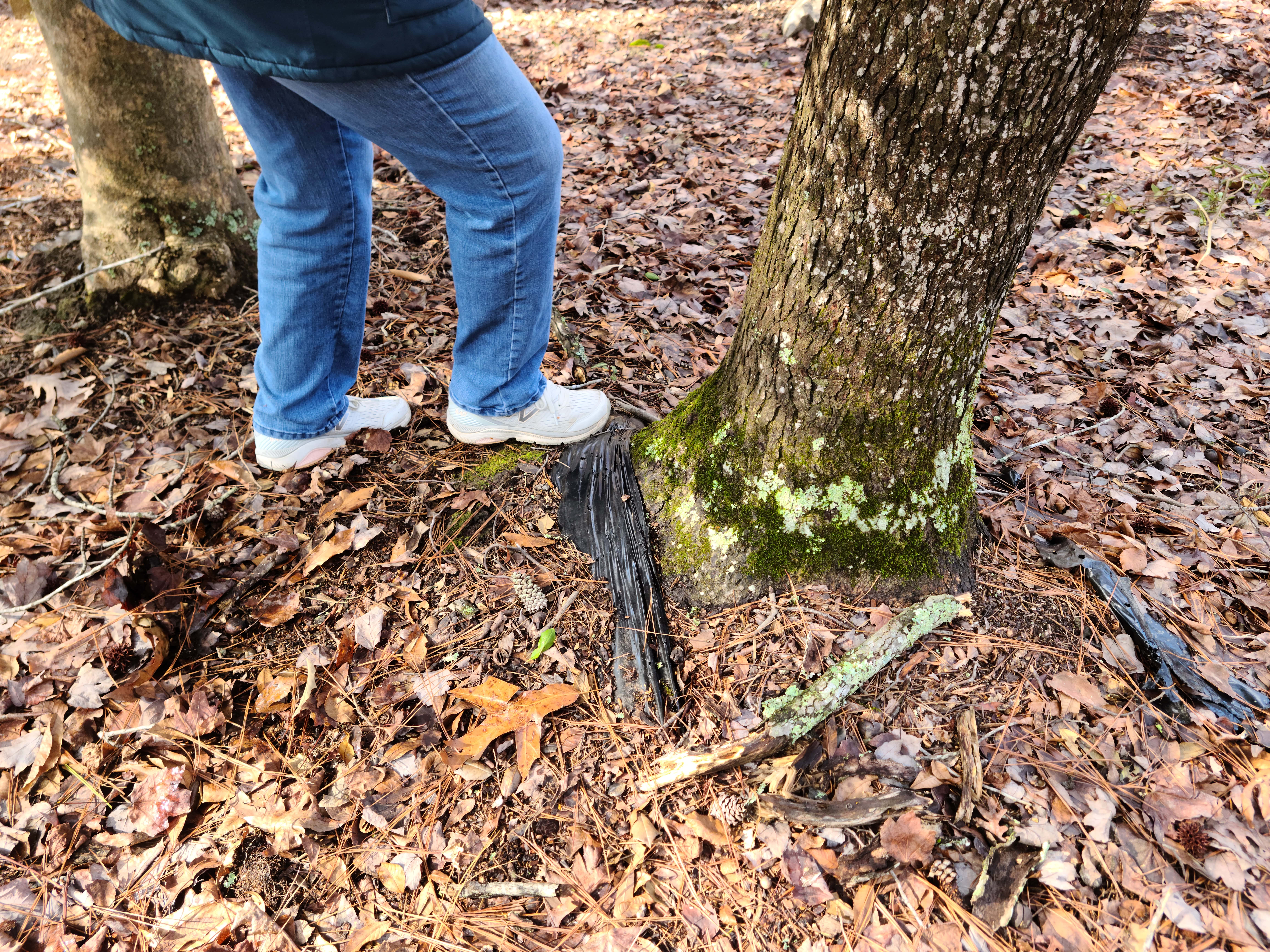Knowing Better: The Appropriate Use of Landscape Fabric
go.ncsu.edu/readext?915237
en Español / em Português
El inglés es el idioma de control de esta página. En la medida en que haya algún conflicto entre la traducción al inglés y la traducción, el inglés prevalece.
Al hacer clic en el enlace de traducción se activa un servicio de traducción gratuito para convertir la página al español. Al igual que con cualquier traducción por Internet, la conversión no es sensible al contexto y puede que no traduzca el texto en su significado original. NC State Extension no garantiza la exactitud del texto traducido. Por favor, tenga en cuenta que algunas aplicaciones y/o servicios pueden no funcionar como se espera cuando se traducen.
Português
Inglês é o idioma de controle desta página. Na medida que haja algum conflito entre o texto original em Inglês e a tradução, o Inglês prevalece.
Ao clicar no link de tradução, um serviço gratuito de tradução será ativado para converter a página para o Português. Como em qualquer tradução pela internet, a conversão não é sensivel ao contexto e pode não ocorrer a tradução para o significado orginal. O serviço de Extensão da Carolina do Norte (NC State Extension) não garante a exatidão do texto traduzido. Por favor, observe que algumas funções ou serviços podem não funcionar como esperado após a tradução.
English
English is the controlling language of this page. To the extent there is any conflict between the English text and the translation, English controls.
Clicking on the translation link activates a free translation service to convert the page to Spanish. As with any Internet translation, the conversion is not context-sensitive and may not translate the text to its original meaning. NC State Extension does not guarantee the accuracy of the translated text. Please note that some applications and/or services may not function as expected when translated.
Collapse ▲July and August are the times when the phone is ringing off the hook at the office with folks wondering why their plants that had been growing beautifully for years are suddenly struggling. The first thing I ask is what species the plant is, and the next thing I ask is whether it was planted properly. And finally, I ask what it has been mulched with. You may be thinking, ‘why are you talking about July and August in a February article?’, but stick with me.
The mild, cool winter days are the time to reflect on some garden techniques and take some time to get ahead of them before the heat of the summer gets here. One of the biggest and most avoidable mistakes you can make in the landscape is to use landscape fabric or landscape plastic as a “mulch”. Que the summer phone calls, many of these struggling plants are “mulched” with landscape fabric. Now is the time to act before the warm weather arrives.
What is Landscape Fabric
There are a couple of different non-organic mulches used in the industry. You have seen it before: black or gray fabric stapled to the ground at a business or in a landscape on the side of the road. Worse yet, you see it sticking up in pieces through pine straw or wood chips. Typically, what is available is a polypropylene woven mesh. Different companies make different thicknesses and formulations for various uses and climates.
Landscape fabric shouldn’t be confused with the plastic mulch used in agricultural production. Think about the plastic covering the rows under the countless fields of strawberries in the county. This is a different material altogether and is used for a specific purpose for a brief period of time in agricultural systems, which are not managed the same way as horticultural systems.
Why is it Not “Mulch”
To understand why landscape fabric is not mulch, we need to know what we are trying to accomplish by using mulch. The purpose of mulch in the horticultural landscape is multifaceted when used appropriately. It reduces soil moisture evaporation; conserves moisture; moderates soil temperature; reduces weed growth; reduces soil loss due to erosion; and improves microbial activity due to all the listed benefits and the addition of organic matter to the soil profile as the material breaks down. Mulches also improve the aesthetic value of landscapes and economic value of crops.
Landscape fabric is typically used as a landscape management tool for the purpose of weed suppression and erosion control. It can do these things, but not as effectively as other organic mulches, and it usually causes secondary issues in the landscape through time. Research going back to the 1980s has shown that landscape fabric that is “mulched” with an organic mulch can become just as weedy as if there was no fabric used and requires a similar amount of time to hand-pull or spray to control weeds. Landscape fabric also impedes water infiltration into the soil, affects gas exchange between the soil biome and the atmosphere, and causes soil temperatures to rise. In a warming climate where rains can be sporadic, these impediments will negatively affect the health of plants that are growing under the fabric and the long-term stress will become most evident during times of stressful weather events, such as periods of drought and heavy rains.
When Should You Use Landscape Fabric
Landscape fabric itself is not “bad”, but it needs to be used in the appropriate way for the right job. A good rule of thumb is to avoid covering the roots of desirable plants with landscape fabric. It is an excellent tool for covering the ground in a nursery

Landscape plastic – photo by Amanda Wilkins
setting, especially if pots are going to sit on the ground or you have benches, you don’t want to mow under. It is also good for covering paths where there is a lot of traffic, but no plant-root competition for space. It is important to know that landscape fabric can wear out and will have to be replaced eventually.
What to Use Instead
The selection of mulching material is important with respect to what plant or crop type you are trying to grow, how you want to manage your landscape goals, and your climatic conditions. The appropriate mulching material could provide the benefits we covered earlier in the landscape. Organic materials, such as pine straw, arborists chips, compost, or leaf mold, applied at 3-6 inches once or twice a year are enough to provide positive soil benefits. What you have available is ultimately what is best.
Finally, if you have landscape fabric in your flower beds or under your trees, start removing that material and replace it with a layer of an organic mulch. It will make a difference, no matter how long that fabric has been in the landscape. Your plants will thank you during the stressful times of the year, and you can reduce the time and effort you put in to reduce weeds and apply amendments.
References
Chalker-Scott and Downer (2022)- Garden Myth-Busting for Extension Educators: The Science Behind the Use of Arborist Wood Chips as Landscape Mulches, Journal of the NACAA
Iqbal, et al. (2020)- Potential agricultural and environmental benefits of mulches—a review
Shahzad, et al. (2019)- Carbon dioxide and oxygen exchange at the soil-atmosphere boundary as affected by various mulch materials
Amanda Wilkins is the Horticulture Agent for North Carolina Cooperative Extension in Lee County.




